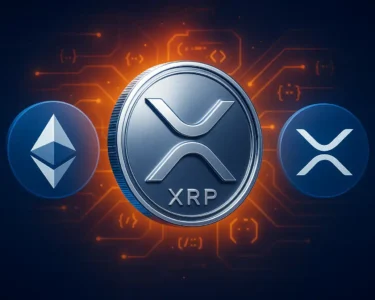
As blockchain technology continues to evolve, interoperability and scalability have become top priorities for developers and businesses. One of the most important concepts enabling this progress is EVM compatibility. Understanding what EVM-compatible blockchains are and why they matter can offer valuable insight into the future of decentralized applications (dApps), cross-chain functionality, and the broader Web3 ecosystem.
What Is EVM Compatibility?
EVM is an acronym of Ethereum Virtual Machine, which is the context in which Ethereum smart contracts are filed and executed. EVM-compatible blockchain will run Ethereum-based smart contracts and dApps without major code changes to be performed, such as removing or inserting lines. Be it said simply, EVM-compatible blockchains are the same “language” as Ethereum does, so, thus, developers can move or launch their apps to other networks without problems.
The mentioned compatibility is especially important for the developers who are trying to increase the scope of their apps that are presently impeded by Ethereum’s limitations like enormously high gas fees and reduced transaction rates. They are able to accomplish that goal by establishing themselves in the EVM-compatible blockchain technology but when they do that they will still be able to utilize Ethereum’s huge toolkit and customer base.
Benefits of EVM-Compatible Blockchains
1. Developer Accessibility
One of the most compelling advantages of EVM compatibility is the ease of development. Developers familiar with Ethereum’s programming language, Solidity, can deploy their applications on EVM compatible blockchains without needing to learn new coding languages or frameworks. This lowers the entry barrier for developers and accelerates dApp innovation.
2. Interoperability
EVM-compatible blockchains allow applications to handle cross-network issues more users. As they live in a shared execution environment, assets and data can automatically switch between blockchains with the help of bridges or Layer 2 solutions. This ultimately elevates the user experience and introduces novel, inter-chain applications.
3. Reduced Costs
Ethereum’s network congestion is the cause of the increased gas fees thereby making some applications excessively expensive. Most EVM-compatible blockchains have low transaction costs and high throughput meaning developers are able to create projects in a more cost-effective manner whilst they are using original Ethereum’s core functions.
4. Ecosystem Expansion
Ethereum has a broad ecosystem of tools. MetaMask, Remix, Truffle, and Hardhat are essential. EVM-compatible blockchains can be integrated fractal with these tools which let developers use a familiar and strong infrastructure. This approach promotes the entire sector’s evolution and, along with it, the blockchain ecosystem is enriched.
Popular EVM-Compatible Blockchains
Ganbu various blockchains integrating EVM compatibility have covered the Ethereum ecosystem while giving outspinning agility. The top-rated ones are as follows:
- Polygon: A Layer 2 scaling solution that provides a framework for building and connecting Ethereum-compatible networks.
- Avalanche C-Chain: high throughput and low latency offered while EVM compatibility is being maintained.
- Fantom: This low-cost and versatile platform is simply made for DeFi and well-designed applications.
- Arbitrum: The Layer 2 chain that is a gas symphony of reduced fees and short transaction period while preserving all Ethereum’s compatibility tokens is the number one cryptochain.
Optimism: manipulating the power of mutual partnership by the ability of decentralization without security breach is yet another Layer 2.
These EVM-compatible blockchains develop the stage where a large number of developers can realize their ideas while using minimal resources and still deliver quality and expand Ethereum’s basic tech.
Why EVM Compatibility Matters
In the continuously proliferating sector of decentralized technologies, standardization becomes a major factor in adoption. EVM-compatible blockchains produce a similarly aligned development avenue, spur interoperability, and underwrite Ethereum’s broader vision of the decentralized internet. These technological capabilities not only empower the developers’ abilities to test and implement without forcing them within the limits of a single network but they also lead to the faster and more efficient development of blockchain technologies. On the other hand, by making a choice of constructing or backing EVM-compatible infrastructures, developers along with enterprises secure their apps for the future, cut costs, and also broaden their reach in numerous blockchain ecosystems.




